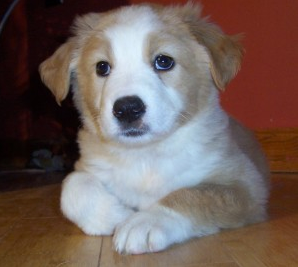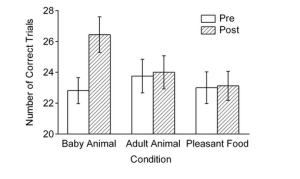We Just Can’t Resist Puppies! Why?


So what is it about puppies? What do they have that draws us to them with such intensity?
Konrad Lorenz (1943), one of the founders of Ethology, was amongst the first to recognize that we react to infant facial structures and specifically to large eyes, small noses and large round cheeks. It’s important for us to immediately and uncontrollably fall in love with our newborn baby. They’re so helpless that we’ll have to devote all our time and attention to keep them alive. It’s no surprise then, that one our baby’s survival strategy is to be cute in order to elicit our care giving instincts. Brain imaging studies revealed that it only takes a seventh of a second for the brain region associated with emotional responses to light up in response to pictures of babies (Norjuchi, 2007).But our brains don’t selectively activate to human babies, anything resembling a baby, small, with round features and seemingly helpless, will awaken our caring and loving instincts. Even cute inanimate objects or stuffed animals are hard to resist. Cuteness has such influence over us, that when carrying a cute dog, men get more interest from women, and beggars get more money from passing strangers. Advertising agencies also know how to use puppies to successfully sell us anything from toilet paper to cars.
The closer the animal’s features are to the human baby’s features, the cuter we think they are and the more we’ll want to take care of it. Furthermore, if we’re shown pictures of cute puppies, before we see those of human babies, our interest for babies of our own species diminishes. (Golle & al. 2013). It has also been shown that in the amygdala, the part of the brain responsible for emotions, we have brain cells that are activated when we see animals, but do not react when we see humans (Mormann & al., 2011).
But if you’re starting to feel bad about your weakness for cute puppies, think twice, it may actually be to your advantage. A Japanese study showed that watching pictures of cute puppies may improve our cognitive abilities! Subjects were divided into different groups then shown pictures of either kittens and puppies, adult dogs and cats, or pleasant food and neutral objects, before performing a specific task. Those who watched pictures of cute kittens and puppies performed significantly better than the others (Fig.1). They were more careful and paid more attention to detail and execution. It’s quite possible that images of cute animals trigger emotional softness and tenderness. They may also put us in a certain frame of mind conducive to better job performance. By preparing us to care for youngsters, we’ll pay extra attention to what we’re about to do (Nittono, 2012).

Puppies are so cute and that triggers our caring emotion and our willingness to sacrifice our peace and serenity (and sometimes even sanity). But what puppies require from us, they give back tenfold. Their cute presence elicits the best instincts within us, contributing to making us better and generally more caring people for the benefit of all those around us.
Jennifer Cattet Ph.D.




Leave a comment